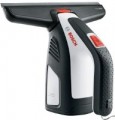Suction width
Suction width provided by the unit. It is indicated mainly for floor scrubbers and window vacuums (see "Type"). In the first case, it refers to the width of the suction beam; in the second — the width of the working nozzle.
The width of the suction beam in scrubber dryers is usually slightly larger than the overall working width — it allows one to collect the water used in cleaning effectively. The size of the suction beam in some models of this type reaches 75 cm. In turn, in window vacuum cleaners the suction width corresponds to the actual working width. Most often, this figure is about 28 – 29 cm. it is believed that such values give an optimal ratio between performance and dimensions/weight of the unit. However, there are also more miniature models — in some devices, the width of the nozzle does not exceed 17 cm.
Additional nozzle
The width of the additional nozzle provided with the device.
Additional attachments are mainly supplied with window models (see "Type"). Such a nozzle is usually made narrower than the main one — it makes it easier to work on small glasses and in hard-to-reach places. However, there is also the opposite option: a small capture width in the device itself, increased by using an additional nozzle.
Voltage
The voltage of the battery used in the machine with the corresponding type of power supply. This parameter is not key when choosing; it may only be needed when looking for a third-party charger or a replacement/spare battery, as well as for specific calculations related to capacity (see below).
Battery capacity
The capacity of the battery installed in the cleaning machine with the appropriate power supply.
In theory, a higher capacity allows you to work longer on a single charge, but in practice everything is not so simple. Firstly, the autonomy is also affected by the energy consumption of the machine, and it is determined mainly by the engine power (see above). Secondly, the actual amount of energy stored in the battery depends not only on the capacity in ampere hours, but also on the operating voltage in volts. Therefore, only batteries with the same voltage can be compared with each other in terms of capacity in Ah (or convert ampere-hours to watt-hours using a special formula and compare the results). And it is best to evaluate the autonomy of the unit by the directly stated operating time (see below).
Autonomy time
Operating time of a battery-powered cleaning machine on one charge of a standard battery.
This parameter itself is quite approximate: it is most often indicated for standard operating modes and simple conditions. However, the actual autonomy is usually not very different from the stated one; so, based on the stated operating time, it is quite possible to both evaluate the capabilities of different models and compare them with each other.
Charging time
The time required to fully charge the battery of cleaning machine (see "Power supply").
The larger the battery, the longer it may take to charge it. On the other hand, this moment also depends on the type of battery. In addition, special technologies are being used to speed up the process. So two machines with a similar battery capacity can differ in charging times.

